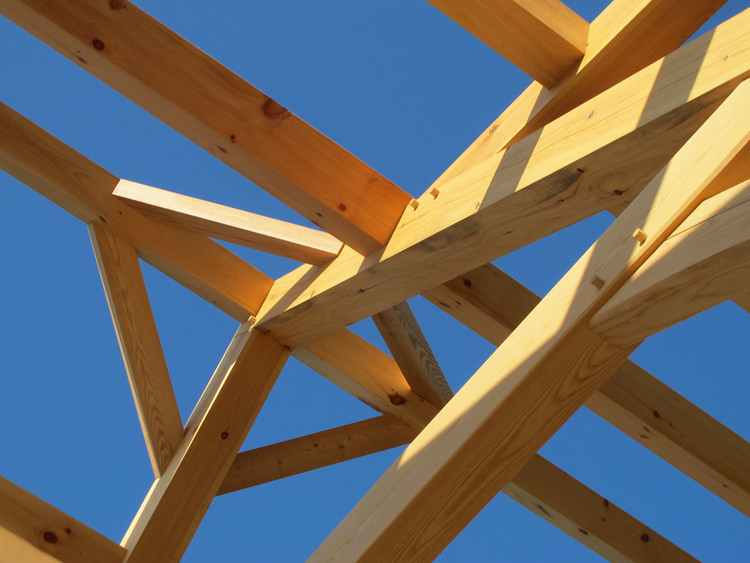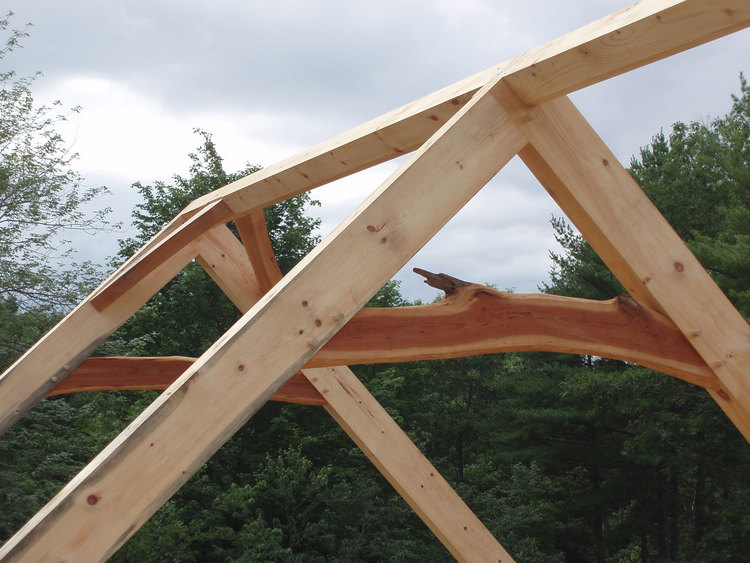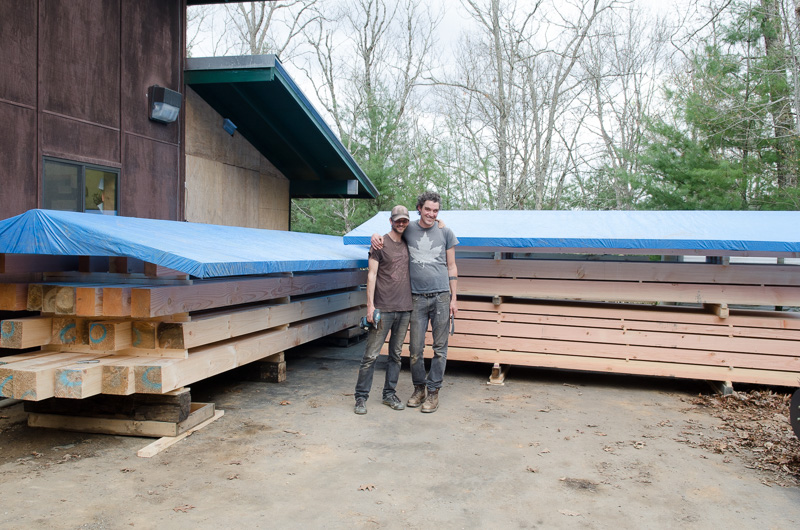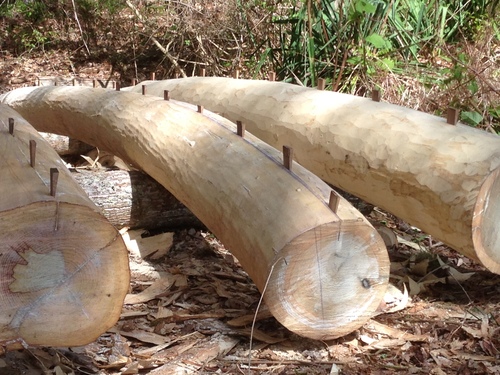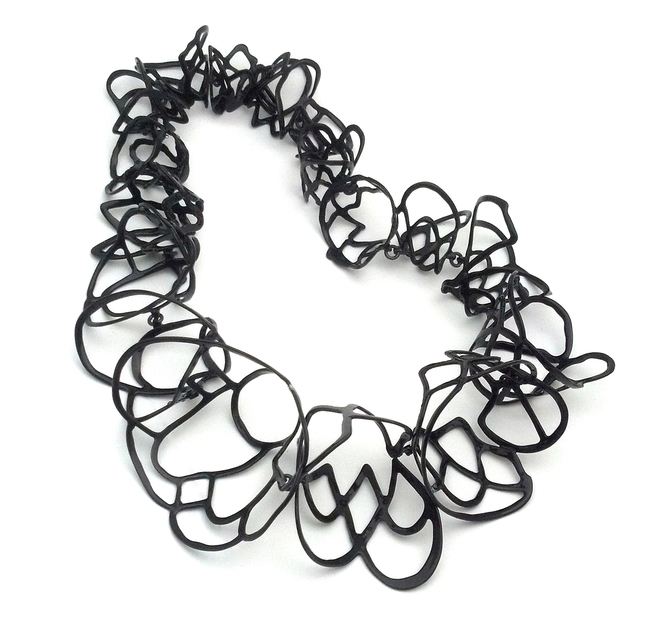
Before Laura Wood was a jeweler, she was a dancer. It’s a history that shows in her work—earrings and brooches that flutter and flow, pendants that seem nearly weightless in their volume. In her recent pieces, Laura has been exploring lace-like constructions of delicate metal. Each one calls to mind a certain rhythm and exuberance, as if a spiraling path of movement has been temporarily frozen in three dimensions.
Laura explains that her training in dance led her to “making adornment for the body, activating pleasure and enjoyment through wearing.” As she describes it, “Each piece is very much an effort in creating body-conscious work… I strive to enhance the silhouette of the body and create work to be worn as a celebration of performance and adornment.”
“Celebration” seems like an appropriate word to describe Laura’s approach to her career as a full-time jeweler. Her designs are lively and dynamic, and she is engaged in building and supporting her community of fellow metalsmiths. As a complement to her own work, Laura co-founded Jewelry Edition, an online and pop-up jewelry exhibit that features a rotating selection of emerging jewelry artists and strives to offer “an in-depth view into the process of contemporary jewelry.”
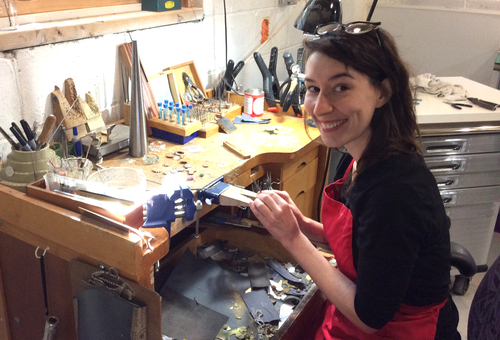
For a lucky group of students, Laura will offer an extra in-depth view of that process at Penland this spring. Her 2016 concentration “Make, Show, Repeat: Cross Training for Jewelers” will focus on all stages of creating jewelry, from the idea phase and the technical aspects of making to finishing details and fine-tuning process.
Registration is now open for Make, Show, Repeat, which will run March 13 – May 6, 2016. Scholarships are available for the course. Scholarship applications are due November 28, 2015.
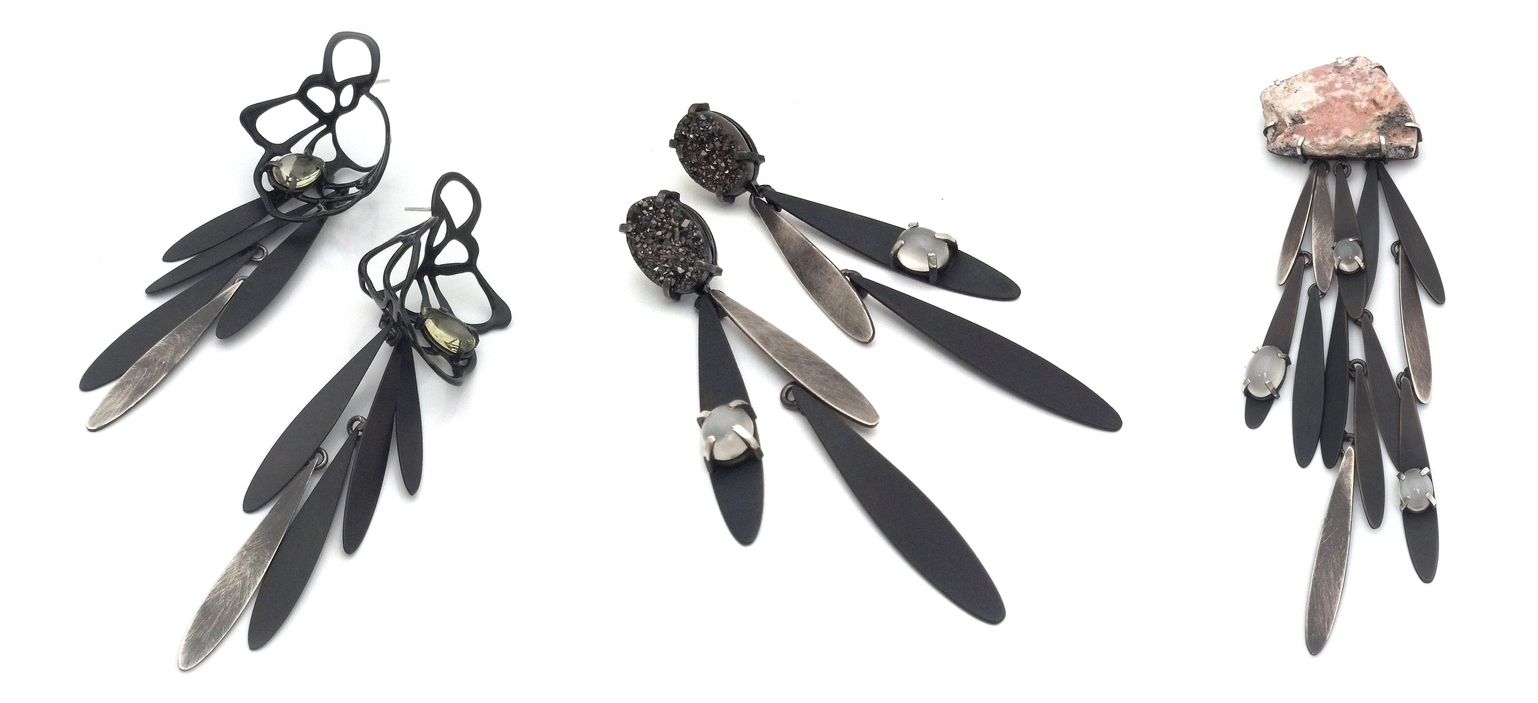
Make, Show, Repeat: Cross Training for Jewelers
Laura Wood – This workshop will introduce a variety of metalsmithing techniques and material exploration to use as a launching pad for new work or to enrich a jewelry-making vocabulary. We’ll engineer components, embellish surface structures, and hone finishing skills. Other highlights will include mold making, powder coating, etching, stone setting, and idea generation. A progressive timeline will guide the structure of the class to encourage fast development. We’ll share our growth in its various stages through pop-up exhibitions. Basic metalsmithing skills will be helpful, but this workshop is open to all levels. Code S00MB
Studio artist; teaching: Southwest School of Art (TX); visiting artist: Western Michigan University, New Mexico State University; gallery representation: Mora Contemporary Jewelry (NC), Signature Gallery (GA), Quirk Gallery (VA), Society for Contemporary Craft (PA), Gallery 360 (MN), Heidi Lowe Gallery (DE), Gallery Store (OR).
Penland Spring Concentrations, March 13 – May 6, 2016
Books | Clay | Glass | Iron | Metals | Textiles | Wood


